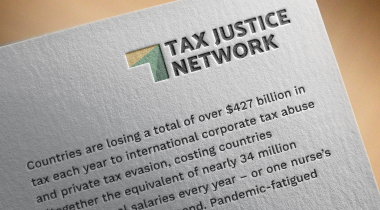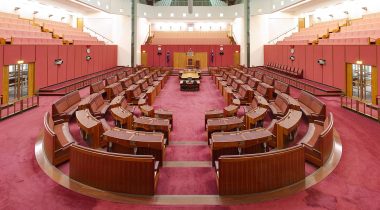
Nick Shaxson ■ Barclays sheds some light on its financial affairs, country by country

Richard Murphy, who pioneered the concept of Country by Country reporting, has produced an important analysis of the data revealed in one of the first such published reports, from UK-based Barclays bank.
Among many other things, he says:
“This analysis suggests that Barclays is massively under-declaring profit in the UK at cost to all of us. I estimate that the loss to the UK could easily exceed £150 million.”
Background: country by country reporting is a form of transparency, where companies break down their financial information by country, instead of (as is currently standard practice) publishing their global or regional figures, which are impossible to unpick to find out what happens in each country. See our dedicated web page here.
We commend Barclays for being among the first to publish such accounts, in advance of a requirement being introduced under the EU’s Capital Requirements Directive for banks and other financial firms to publish Country by Country reports.
But of course there are problems with the data Barclays provided – and what it reveals raises important questions about global taxation and about Barclays too.
Murphy’s analysis compares the profits Barclays declares in each of the main countries where it operates, with the allocation of profits that would result from applying a unitary taxation approach.
Background again: Read more about unitary taxation here: Instead of, say, taking artificial tax haven activity seriously, such an approach instead hones in on genuine underlying economic activity. A unitary approach would take Barclays’ total profits, and apportion them to the various jurisdictions according to a formula reflecting the bank’s economic presence in each country. Each jurisdiction could then tax its own share of the global profit at its own tax rate.
Richard’s analysis applies to the Barclays data an apportionment formula that gives equal weight to sales and employee numbers in each country. The results highlight the disproportionate levels of profit declared in tax havens, such as Luxembourg, Jersey, Singapore and the Isle of Man, compared to other countries where it does substantial genuine business, especially the UK but also including Spain, France, Italy, Kenya, Tanzania and Zambia.
However, this is of course as he admits only a very rough-and-ready analysis, using the data provided in Barclays’ own report, which is not best suited to these purposes.
As Richard notes in a follow-up blog, one limitation is that the data provided comes from financial accounts, where the sales data used are those sales that are attributed to the entity no matter where the real customer is located. So the accounts show a high turnover in Luxembourg – even though the vast bulk of this ‘turnover’ involves real customers living elsewhere. (European readers, for example: take a look at your next Amazon order, and you’ll see that you have been dealing with an entity called Amazon SARL in Luxembourg.)
A true unitary approach would look at sales data based on where the genuine end customers are located, but unfortunately the Barclays data doesn’t provide this. If appropriate data were available, it would likely show an even starker divergence between where Barclays has genuine economic activities and where it declares its profits.
There are other problems with the Barclays data too: see more here. We urge Barclays and others to go further and provide data that could enable a more informed debate about the real relationship between where they pay their taxes and where their real activities take place.
These should include not only sales by customer location, but also data on profits defined under tax rules rather than under financial accounting rules. Accurate evaluation of effective tax rates is not possible if profits are those reported under financial accounting standards for the financial year, while taxes paid are calculated instead on the tax authorities’ definitions of profits – and presumably for an earlier year.
Related articles

2025: The year tax justice became part of the world’s problem-solving infrastructure

Tackling Profit Shifting in the Oil and Gas Sector for a Just Transition
The State of Tax Justice 2025
One-page policy briefs: ABC policy reforms and human rights in the UN tax convention

Bad Medicine: A Clear Prescription = tax transparency

The Financial Secrecy Index, a cherished tool for policy research across the globe

Lessons from Australia: Let the sunshine in!

Strengthening Africa’s tax governance: reflections on the Lusaka country by country reporting workshop


